
Christ Church and Milton Hall are adjacent 19th-century buildings with significance in the early religious and secular history of Launceston, Tasmania. Both buildings are located on Frederick Street, near Prince's Square.

Christ Church and Milton Hall are adjacent 19th-century buildings with significance in the early religious and secular history of Launceston, Tasmania. Both buildings are located on Frederick Street, near Prince's Square.

Milton Hall was put up in either 1841 or 1842 as St John's Congregational Church, under John West. [1] [2] [3] The chapel was built in the Greek Revival style with a portico of four Doric columns topped with a pediment. [4]
After the establishment of Christ Church, Milton Hall served as a Sunday school and, from 1884 till 1913, as Launceston High School. [2]
Milton Hall hosted historic debates on the cessation of convict transportation and the framing of Federation. [1] The first version of the Australian flag was said to have been conceived and sewn there. [1]
Christ Church was renovated into a large red brick church between 1883 and 1885, to a Gothic Revival design by Granger & D'Ebro which included an octagonal spire, turrets and buttresses. [4] The church was furnished with a c. 1875 organ by Bevington & Sons. [4] A stained glass window representing the Calling of Matthew was made by Brooks & Robinson, Melbourne, for Christ Church, and was displayed in the Albert Hall as part of the Tasmanian Exhibition of 1891–92. [5]
From 1983 till 2021, Christ Church functioned as a Baptist church, officially gazetted as City Baptist Church. [1]
In 2021, Christ Church and Milton Hall—both owned by the Baptist Union of Tasmania—were put up for sale, [1] [6] and in 2022 Tasmanian entrepreneur Rob Sherrard acquired both buildings. [7]

Launceston is a city in the north of Tasmania, Australia, at the confluence of the North Esk and South Esk rivers where they become the Tamar River (kanamaluka). As of 2021, the Launceston urban area has a population of 90,953. Launceston is the second most populous city in Tasmania after the state capital, Hobart. Launceston is the fifth-largest inland city and the ninth-largest non-capital city in Australia. Launceston is regarded as the most livable regional city, and was one of the most popular regional cities to move to in Australia from 2020 to 2021. Launceston was named Australian Town of the Year in 2022.
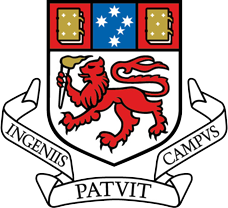
The University of Tasmania (UTAS) is a public research university, primarily located in Tasmania, Australia. Founded in 1890, it is Australia's fourth oldest university. Christ College, one of the university's residential colleges, first proposed in 1840 in Lieutenant-Governor Sir John Franklin's Legislative Council, was modelled on the Oxford and Cambridge colleges, and was founded in 1846, making it the oldest tertiary institution in the country. The university is a sandstone university, a member of the international Association of Commonwealth Universities, and the Association of Southeast Asian Institutions of Higher Learning.
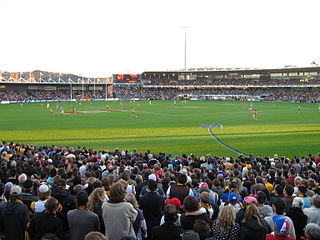
York Park is a sports ground in the Inveresk and York Park Precinct, Launceston, Australia. Holding 21,000 people, York Park is known commercially as University of Tasmania (UTAS) Stadium and was formerly known as Aurora Stadium under a previous naming rights agreement signed with Aurora Energy in 2004. Primarily used for Australian rules football, its record attendance of 20,971 was set in June 2006, when Hawthorn Football Club played Richmond Football Club in an Australian Football League (AFL) match.

Boag's Brewery is an Australian brewery company founded in 1883 by James Boag and his son, also named James, in Launceston, Tasmania, Australia. It is now owned by Lion, a Trans-Tasman subsidiary company of Japanese beverage conglomerate, Kirin. All of the company's beers are produced in Launceston.

The Parliament of Tasmania is the bicameral legislature of the Australian state of Tasmania. It follows a Westminster-derived parliamentary system and consists of the governor of Tasmania, the Legislative Council, and the House of Assembly. Since 1841, the Legislative Council has met in Parliament House, Hobart, with the House of Assembly following suit from its establishment in 1856. The Parliament of Tasmania first met in 1856.

Bishopsbourne is a rural locality in the local government area (LGA) of Northern Midlands in the Central LGA region of Tasmania. The locality is about 19 kilometres (12 mi) south-west of the town of Longford. The 2016 census has a population of 136 for the state suburb of Bishopsbourne. It is a farming community and has a church, graveyard and recreation ground. Nearby towns include Carrick, Bracknell and Longford. Almost all the houses and farms are located on Bishopsbourne Road and there are a few back roads. There has been increased activity of development in recent years, though none of it has been commercial.
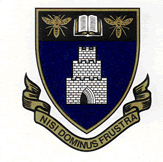
Launceston Church Grammar School is an Anglican co-educational private school in Launceston, Tasmania, Australia for Early Learning through to Grade 12.

Carrick is a small historic village 17 kilometres (11 mi) west of Launceston, Tasmania, Australia, on the banks of the Liffey River. The Meander Valley Highway passes through the town's centre; this road was formerly the main road from Launceston to Deloraine and Devonport. Carrick has a well-preserved 19th-century heritage; fifteen of its colonial buildings are listed on the Tasmanian Heritage Register including Carrick House (1840), St Andrew's Church (1848), the Old Watch house (1837), Monds Roller Mill (1846) and the Carrick Hotel (1833).

John West emigrated from England to Van Diemen's Land in 1838 as a Colonial missionary, and became pastor of an Independent (Congregational) Chapel in Launceston's St. John's Square. He also co-founded The Examiner newspaper in 1842 and was later editor of The Sydney Morning Herald.
The Queen Victoria Museum & Art Gallery (QVMAG) is a museum located in Launceston, Tasmania, Australia. It is the largest museum in Australia not located in a capital city.

The Albert Hall is a convention centre in Launceston, Tasmania in the style of high Victorian architecture, first opened as the main structure for the Tasmanian Industrial exhibition which ran from 25 November 1891 to 22 March 1892. It is located on the corner of Tamar Street and Cimitiere Street. It was first listed on the Register of the National Estate on 21 March 1978.
The Royal Launceston Show is an annual event held in Carrick in October and is hosted by the Royal National Agricultural and Pastoral Society of Tasmania (RNAPS), established in 1873. The show marks a public holiday that is observed in northern Tasmania only.
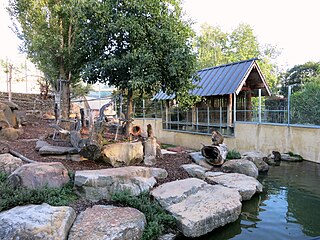
Launceston City Park is a park in Launceston, Tasmania, Australia. Established in the 1820s by the Launceston Horticultural Society and handed over to the Launceston City Council in 1863. It is now an important part of cultural life in Launceston and also a heritage park.

The Colony of Tasmania was a British colony that existed on the island of Tasmania from 1856 until 1901, when it federated together with the five other Australian colonies to form the Commonwealth of Australia. The possibility of the colony was established when the Parliament of the United Kingdom passed the Australian Constitutions Act in 1850, granting the right of legislative power to each of the six Australian colonies. The Legislative Council of Van Diemen's Land drafted a new constitution which they passed in 1854, and it was given royal assent by Queen Victoria in 1855. Later in that year the Privy Council approved the colony changing its name from "Van Diemen's Land" to "Tasmania", and in 1856, the newly elected bicameral parliament of Tasmania sat for the first time, establishing Tasmania as a self-governing colony of the British Empire. Tasmania was often referred to as one of the "most British" colonies of the Empire.

Old Government House was the former official residence and home of the Governor of Tasmania from 1807 to 1858, when it was demolished following completion of the modern Government House, Hobart on the Queens Domain. It was located approximately where Hobart Town Hall and Franklin Square stand now. It was built sometime between 1805 and 1810 with dates varying according to sources and at least during 1831 housed the Tasmanian Parliament as well as being the residence of the Governor and meeting place of the Tasmanian Society, a precursor to the Royal Society of Tasmania. The Tasmanian Parliament moved to the modern Parliament House, Hobart in 1841, and following the construction of the modern Government House the old house was demolished. It had earlier been reserved for the location of the new Town hall and a Franklin monument, which were both later built there and continue to stand to this day.
Quamby Estate is a country homestead situated on 150 acres in Tasmania's Meander Valley. The estate is a Tasmanian historically important property and dates back to 1828. Quamby was the home of Sir Richard Dry, a premier of Tasmania and the first native-born premier and knight in any Australian colony. The property is now a commercial luxury lodge.

Prince's Square is a park in Launceston, Tasmania, Australia. Established in 1858 from a disused brickfield it is now an important part of cultural life in Launceston and also a heritage park. The park is known for its symmetrical planning and the bronze gilded Val d'Osne Fountain. The park is bound on all four sides by Elizabeth Street, St John Street, Frederick Street and Charles Street.
Lola Greeno is an artist, curator and arts worker of Aboriginal descent. She studied a Bachelor of Fine Arts at the University of Tasmania in Launceston, finishing her degree in 1997.
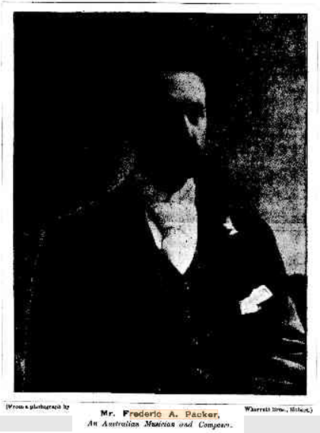
Frederick Augustus Gow Packer, generally referred to as F. A. Packer but also Frederick Gow Packer, was an Australian composer of Anglican spiritual and romantic music.

The Avalon Theatre is a historic former Temperance Hall, theatre and cinema in Hobart, Tasmania, Australia.
{{cite book}}: CS1 maint: location missing publisher (link)